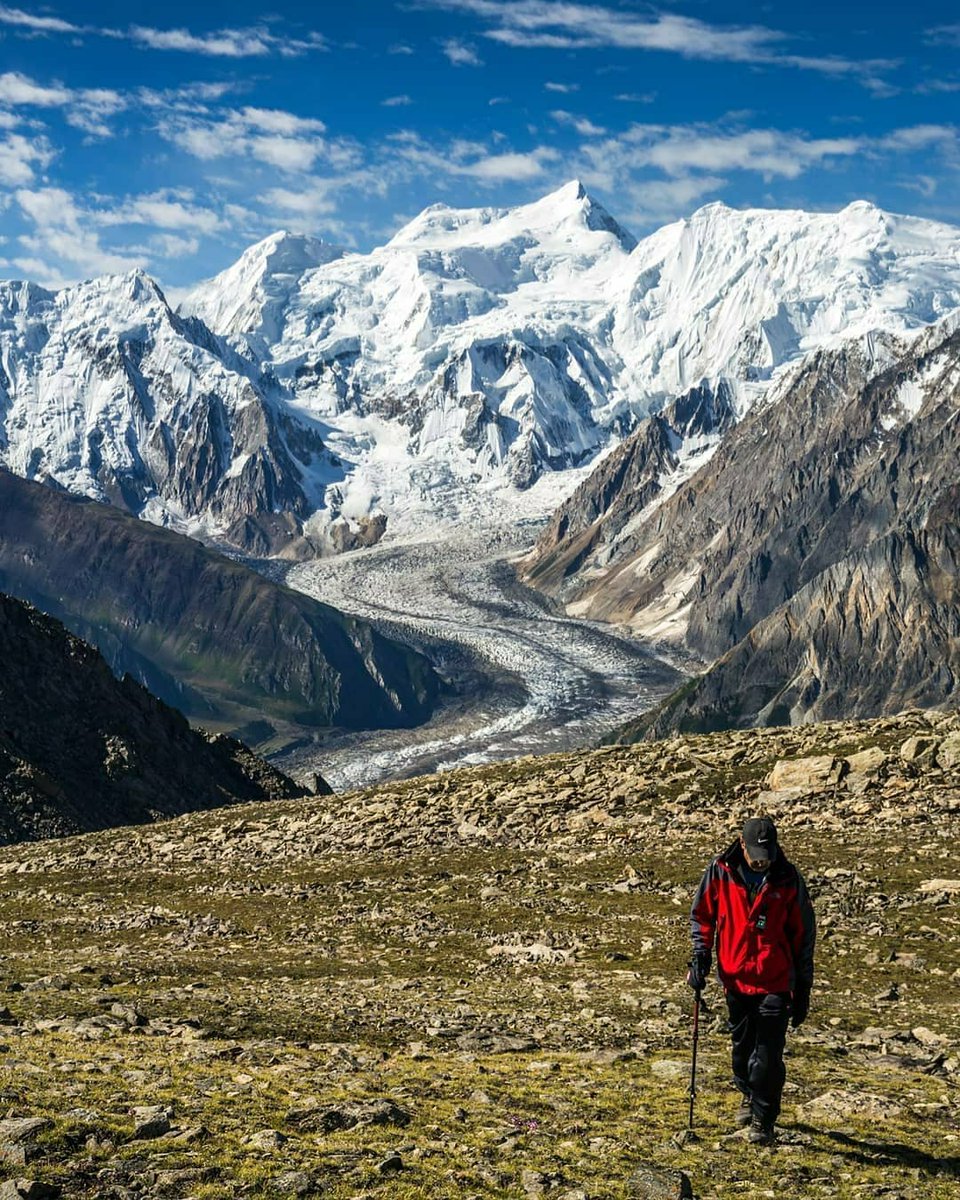MERA PEAK CLIMBING

Mera Peak is a popular trekking and climbing destination located in the Khumbu region of Nepal. Standing at an impressive height of 6,476 meters (21,247 feet), it is one of the highest trekking peaks in the country. Mera Peak climbing offers a thrilling adventure and stunning panoramic views of the Himalayas, including the majestic Mount Everest.
The journey to Mera Peak typically begins with a flight from Kathmandu to Lukla, followed by a trek through picturesque Sherpa villages, lush forests, and scenic valleys. As you ascend higher, you'll experience a change in landscape, with alpine meadows, glacial moraines, and awe-inspiring vistas becoming more prevalent.
Mera Peak climbing is not only a physical challenge but also an opportunity to immerse oneself in the unique culture of the Sherpa people. Along the way, you'll encounter Sherpa villages, monasteries, and prayer flags, providing a glimpse into the rich traditions and Buddhist heritage of the region.
The climbing route to Mera Peak typically includes a base camp, high camp, and a summit push. After reaching the base camp, climbers undergo acclimatization and receive necessary training on climbing techniques and equipment usage. The ascent to the summit involves traversing glaciers, negotiating crevasses, and climbing steep sections. The final push to the top rewards climbers with breathtaking panoramic views of five of the world's tallest peaks, including Mount Everest, Lhotse, Cho Oyu, Makalu, and Kanchenjunga.
Mera Peak climbing is a thrilling and rewarding experience for adventure enthusiasts and nature lovers. It combines the excitement of scaling a Himalayan peak with the awe-inspiring beauty of the Khumbu region. With proper preparation, guidance, and a sense of adventure, Mera Peak can be conquered, leaving you with lifelong memories and a profound sense of achievement.
Day 1: Arrival in Kathmandu
Upon your arrival at Tribhuvan International Airport in Kathmandu, you will be greeted by a representative from the trekking agency who will transfer you to your hotel. You can spend the rest of the day exploring the vibrant streets of Thamel, a popular tourist area in Kathmandu.
Day 2: Kathmandu Sightseeing and Preparation
Today, you will embark on a guided sightseeing tour of Kathmandu, visiting UNESCO World Heritage sites such as Pashupatinath Temple, Boudhanath Stupa, and Kathmandu Durbar Square. In the afternoon, you will have a pre-climbing briefing and equipment check with your climbing guide. You can also use this time to purchase any necessary gear or supplies.
Day 3: Fly to Lukla and Trek to Paiya (Chutok)
An early morning flight from Kathmandu takes you to Lukla, the gateway to the Everest region. From Lukla, you will start your trek, descending towards the Dudh Koshi River. Passing through lush forests and picturesque Sherpa villages, you will reach Paiya (Chutok) and spend the night there.
Day 4: Trek to Panggom
Today's trek takes you through a beautiful forested trail, gradually ascending towards Panggom. You will have stunning views of the surrounding landscapes and the opportunity to interact with the local Sherpa community. Panggom is a small village known for its traditional wooden houses and warm hospitality.
Day 5: Trek to Nashing Dingma
- Continuing your ascent, you will trek towards Nashing Dingma, crossing the Panggom La Pass (3,150 meters) along the way. The trail offers breathtaking views of the Himalayas, including Mera Peak in the distance. Nashing Dingma is a small settlement with basic tea houses where you will spend the night.
Day 6: Trek to Chhatra Khola
Leaving Nashing Dingma, you will descend through a forested trail towards Chhatra Khola. You will cross several rivers and streams, and the vegetation gradually changes as you enter the Hinku Valley. Chhatra Khola is a riverside camping site where you will set up your tents for the night.
Day 7: Trek to Kothe
Today's trek takes you alongside the Hinku River, passing through lush rhododendron forests. The trail gradually climbs up, offering beautiful views of the surrounding peaks. Kothe is a small village located at an altitude of 3,600 meters, where you will spend the night.
Day 8: Trek to Thangnak
Continuing your journey, you will trek towards Thangnak. The trail passes through beautiful landscapes, moraines, and glacial lakes. Thangnak is a scenic village located at the foot of the Hinku Nup Glacier. Here, you will have ample time to rest and acclimatize for the upcoming days.
Day 9: Acclimatization Day in Thangnak
This day is set aside for acclimatization and exploration in Thangnak. You can take short hikes to nearby viewpoints, visit the beautiful glacial lakes, or simply relax and enjoy the serene surroundings. Acclimatization is crucial for a successful climb, so it's important to listen to your body and adjust accordingly.
Day 10: Trek to Khare
Today, you will trek towards Khare, the base camp for Mera Peak climbing. The trail gradually ascends, offering breathtaking views of the surrounding peaks and glaciers. Khare is a small settlement with basic tea houses and camping grounds. You will spend the night here.
- Airport transfers: Pick-up and drop-off at Tribhuvan International Airport in Kathmandu.
- Accommodation: Accommodation in Kathmandu (usually 3-star hotel) for the duration of the package.
- Permit arrangements: All necessary permits required for Mera Peak climbing, including climbing permit, TIMS (Trekkers' Information Management System) card, and national park entry permit.
- Experienced guide and support staff: Professional climbing guide with extensive experience in the region, along with a team of experienced Sherpa guides and porters.
- Trekking and climbing logistics: All trekking and climbing logistics, including transportation from Kathmandu to Lukla by domestic flight, tea house/lodge accommodations during the trek, camping equipment (tents, sleeping bags, mattresses), dining tent, kitchen equipment, and necessary ropes and safety equipment for climbing.
- Meals: Full-board meals during the trek, including breakfast, lunch, and dinner. Meals are typically served in tea houses or prepared by the trekking team.
- Climbing training and support: Pre-climbing briefing and training on climbing techniques, safety procedures, and the proper use of climbing equipment.
- High-altitude medical support: Basic first aid kit and high-altitude medical support from trained staff.
- Emergency evacuation: Provision for emergency helicopter evacuation service in case of any unforeseen circumstances.
- Insurance: Insurance coverage for climbing staff, including insurance for porters and guides.
- Kathmandu sightseeing: Guided sightseeing tour of Kathmandu, including visits to UNESCO World Heritage sites.
- 24/7 assistance: 24-hour emergency support and assistance from the trekking agency.
- International flights: Flights to and from Kathmandu are not included in the package.
- Visa fees: Fees for obtaining a tourist visa for Nepal.
- Travel insurance: Personal travel insurance covering medical expenses, trip cancellation, and emergency evacuation.
- Personal equipment: Climbing gear and personal equipment required for the climb, including boots, crampons, ice axe, harness, etc.
- Personal expenses: Expenses of a personal nature such as additional meals, snacks, beverages, phone calls, laundry, and shopping.
- Accommodation and meals in Kathmandu: Accommodation and meals in Kathmandu beyond the duration of the package.
- Extra services: Any additional services or activities not mentioned in the package.
- Tips: Tips and gratuities for guides, porters, and support staff. It is customary to tip the climbing team as a gesture of appreciation for their hard work and support.
Is previous climbing experience required to climb Mera Peak?
Previous climbing experience is not mandatory, but it is recommended to have prior trekking experience in high-altitude environments. Good physical fitness, endurance, and the ability to adapt to changing conditions are essential.
What is the best time to climb Mera Peak?
The best time for Mera Peak climbing is during the pre-monsoon (spring) season from March to May and the post-monsoon (autumn) season from September to November. These seasons offer stable weather, clear skies, and favorable climbing conditions.
What permits are required to climb Mera Peak?
Climbing Mera Peak requires a climbing permit, which is obtained through the Nepal Mountaineering Association (NMA). Additionally, a TIMS (Trekkers' Information Management System) card and a national park entry permit are required.
How challenging is the climb to Mera Peak?
Mera Peak is considered a moderately challenging climb. It involves long days of trekking, steep ascents, and altitude gains. However, it does not require technical climbing skills. Proper acclimatization and physical fitness are crucial for a successful climb.
What kind of accommodation is available during the trek?
Accommodation during the trek is typically in tea houses or lodges along the trail. These are basic but comfortable, offering private or shared rooms with common dining areas. In higher altitudes, camping is done in tents provided by the trekking agency.
Do I need to bring my own climbing equipment?
Basic climbing equipment such as ropes, harnesses, and ice axes are provided by the trekking agency. However, climbers are usually required to bring their own personal climbing gear, including boots, crampons, and helmets. It is recommended to check with the agency regarding the specific gear requirements.
Is altitude sickness a concern during the climb?
Yes, altitude sickness can be a concern during Mera Peak climbing due to the high elevation. Proper acclimatization, slow ascent rates, and hydration are essential to minimize the risk. It is advisable to consult with a doctor and follow the guidance of experienced guides.
Are there any emergency evacuation options on the trek?
In case of any emergency or medical evacuation needs, helicopter rescue services are available. It is important to have travel insurance that covers emergency evacuation to ensure prompt assistance in case of unforeseen circumstances.
Can I hire porters and guides for the climb?
Yes, it is highly recommended to hire experienced guides and porters for the climb. They have local knowledge, expertise, and can assist with logistics, safety, and navigation. Porters can carry your heavy gear, allowing you to focus on the climb.
How much should I budget for Mera Peak climbing?
The cost of Mera Peak climbing varies depending on the trekking agency, services included, and the number of climbers in the group. It is advisable to budget for the climbing permit, guide and porter fees, accommodation, meals, gear rental, travel insurance, and miscellaneous expenses.


